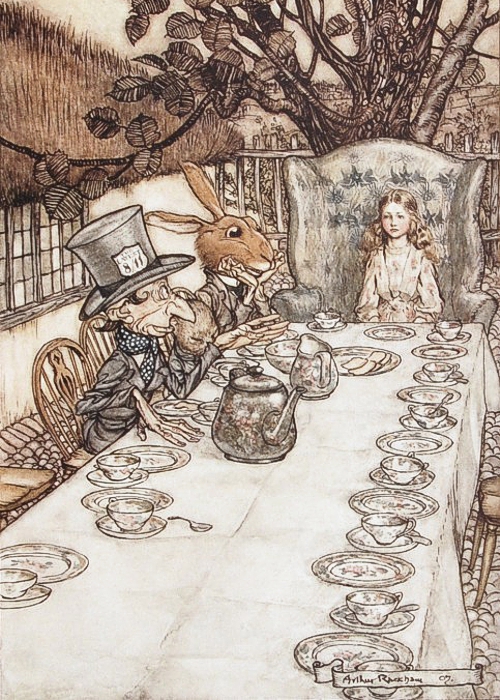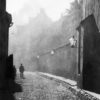Arthur Rackham
Text: Paula Mroczkowska
The illustrations designed for Alice in Wonderland or Peter Pan are filled with charm and irresistible grace; it seems that they represent the world of childhood dreams.

Bookshops, similarly to cafes, constitute such points on the city map I enjoy visiting. Actually, when it comes to bookshops, for me going there involves greater pleasure. I have always been a bookworm. From the very beginning, however, I have paid attention to details – I am not talking about the content of books, but rather about the book covers. I am impressed that nowadays books for adults are published in a beautiful manner as well – especially smaller, independent publishers focus on the quality of their publications – proper smoothness, density of paper, well-thought-out graphic design. It’s just a pity that still in case of so few books for mature readers the illustrated text plays a significant role. And if they do appear on the market, they are often treated as a sort of experiment (for example, Senny żywot Leonory de la Cruz by Agnieszka Taborowska).
For this reason, each time I visit a bookshop I head towards bookshelves devoted for children. Books for children provide me with aesthetically pleasing experiences comparable to those I experience while spending time in the art gallery. I admire the lines, the colors, the aura offered by the illustrations reflecting the spirit of their times and reflecting the contemporary approach to young readers.
The child reading the book in many cases becomes an equal partner for the artist, collaborating in commenting and even criticizing the reality; thus executing the right to express his or her opinion. If we assume it is quite a modern invention, a novel approach to the aesthetics of books for children, then we are mistaken. Analyzing the works of English artists such as Eleanor Vere Boyle, Kate Greenaway, John Tenniel or Arthur Rackham is sufficient to prove us wrong. Especially if we refer to the works of the last aforementioned illustrator who perfectly reflected the spirit of the Victorian era, although they were created a little bit later – at the turn of the nineteenth and twentieth century.
The illustrations designed for Alice in Wonderland or Peter Pan are filled with charm and irresistible grace; it seems that they represent the world of childhood dreams. These illustrations are perfectly suitable for the sensitivity of the young audience. What is more, they establish an extremely ethereal image of the female beauty, referring in a visible manner to the heritage of the Pre-Raphaelites. Young girls with hair blown by the wind, created by delicate but at the same time skilled hands, make us think about elusive fairies residing in enchanted gardens, parks and forests.
One can guess how non-intrusive but memorable images had to affect the imagination of children. Pure color, precise drawings as well as the incredible ability to create an atmosphere constituted the components which contributed to Rackham’s success and allowed him to obtain the title of a great illustrator. The fame of this artist exceeded the boundaries of his native country. He was popular even in the United States. It is not surprising – the works of this English artist reveal his understanding for the needs of young readers. And young readers sent him letters often containing enthusiastic reviews of the artist’s work.
Using his illustrations Rackham created the world which is a bit surreal, dreamy, soaked in magic. It is a reality subordinated to the laws of nature. Those laws do not appear to be cruel. Quite a contrary, they are favorable to a human being. If this was how the artist wanted to awaken and honor the child’s curiosity concerning the world, then he undoubtedly succeeded in doing so. If the adult audience admiring his illustrations started longing for the carefree days of their childhood, his intention was also realized successfully. Arthur Rackham’s work have the power to delight those who stopped being children some time as well. It is possible that they serve as an inspiration for contemporary illustrators. Perhaps next time when I approach children’s bookshelf motivated by longing for an aesthetic experience, I will enter the world in which I will be able to recognize elements taken from the imagination of Arthur Rackham.




